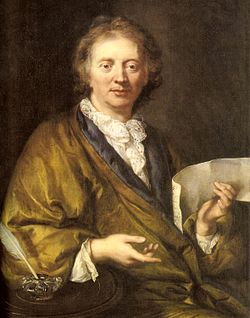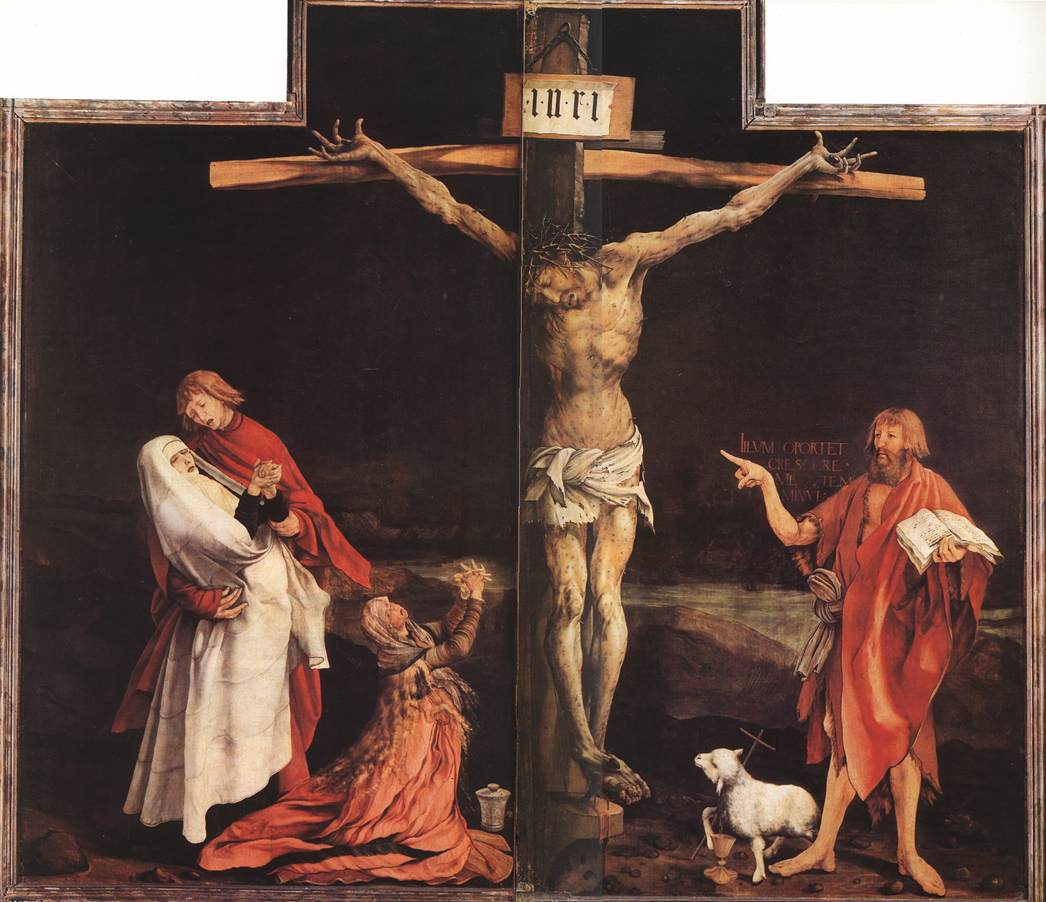November 10, 2014.Couperin, Borodin, Hindemith.François Couperin, one of the greatest French Baroque composers, was born on this day in 1668.He came from a large family of musicians, some of them very talented (you can read more about the Couperins in our earlier post).He was incomparable as a composer for the harpsichord (clavecin, as it is called in French).Couperin wrote four Books for the harpsichord, each containing several “orders,” 27 orders altogether.One of the pieces in Order 6 (Book 2) is called Les Barricades Mistérieuses (The mysterious barricades); it was written in 1717.Nobody knows for sure why Couperin used this unusual title, although many suggestions have been made, from rather risqué to outlandish.In any event, here it is, performed by Scott Ross.(A talented American harpsichordist who spent most of his life in Canada and France, Ross had a tragically short life: he died in 1989 at the age of 38.Ross recorded all keyboard compositions by Couperin, all 555 sonatas by Domenico Scarlatti, and many other works by the Baroque composers).
The chemist, doctor and accidental composer of great talent, Alexander Borodin was born on November 12th of 1833.All his life Borodin was mostly interested in sciences, studying in St.-Petersburg and universities abroad and eventually obtaining a teaching position at the prestigious Medical-Surgical Academy.Music was a love, and composing – a pleasant hobby.In 1862, at the home of his colleague, the famous doctor Sergey Botkin, Borodin met Mily Balakirev and then through Balakirev, he made friends with Cesar Cui, Modest Mussorgsky, and the young Nikolai Rimsky-Korsakov.Five years later the music critic Vladimir Stasov would call them the Mighty Five.The 1862 meeting strongly affected Borodin, and almost immediately he started working on his 1st Symphony.Even though he wrote three of them, some chamber music, and most of Prince Igor, a truly great opera (it fell upon Rimsky-Korsakov and Glazunov to finish it after Borodin’s death), he never made composing his main profession.In 1880 Borodin wrote a symphonic poem In the Steppes of Central Asia (the original Russian title was just “Central Asia”).In 1908, a Frenchman by the name of Joseph-Louis Mundwiller shot a documentary called Moscow Clad in Snow (and it really was that year).It’s a fascinating film that shows Moscow at the beginning of the 20th century, much of which doesn’t exist any longer.When the movie was restored, the editors decided that Borodin’s In the Steppes would go well as an accompaniment.Even though there are thousands of miles between Moscow and Central Asia, somehow it worked.Here is In the Steppes of Central Asia as performed by Kurt Sanderling and Dresden Staatskapelle.And here is the movie on YouTube.It’s worth watching even if you’ve have never been to Moscow.
One of the most important German composers of the 20th century, Paul Hindemith was born on November 16th, 1895.We need to dedicate an entry to him alone, but right now we’ll present one of his most famous compositions, the symphony Mathis der Maler (Matthias the Painter).“Mathis” in the title is Matthias Grünewald, a German Renaissance painter who lived from 1470 to 1528.His greatest work was the so-called Isenheim Altarpiece, which consists of a large central panel depicting the Crucifixion and several side panels with the Annunciation, several saints, the visit of Saint Anthony to Saint Paul the Hermit and other biblical and apocryphal stories.The side panels can be opened and closed, creating different views of the altar.The altarpiece is an absolute pinnacle of German art; the power of it is as overwhelming today as it was 500 years ago.Located in a museum in the Alsatian city of Colmar it is very much worth the trip, as the Michelin guide would put it, even though Colmar itself is not a very interesting place (but of course if you’re there, you’ve already made it to Strasbourg).If the trip to Alsace isn’t in your plans, thenyou can go to the Web Gallery of Art and view it there.Mathis der Maler consists of three movements, each corresponding to a separate panel: Angelic Concert, Entombment, and The Temptation of Saint Anthony.Here it is, in the performance by the London Symphony Orchestra, Jascha Horenstein conducting.
Couperin, Borodin, Hindemith - 2014
November 10, 2014. Couperin, Borodin, Hindemith. François Couperin, one of the greatest French Baroque composers, was born on this day in 1668. He came from a large family of musicians, some of them very talented (you can read more about the Couperins in our earlier post). He was incomparable as a composer for the harpsichord (clavecin, as it is called in French). Couperin wrote four Books for the harpsichord, each containing several “orders,” 27 orders altogether. One of the pieces in Order 6 (Book 2) is called Les Barricades Mistérieuses (The mysterious barricades); it was written in 1717. Nobody knows for sure why Couperin used this unusual title, although many suggestions have been made, from rather risqué to outlandish. In any event, here it is, performed by Scott Ross. (A talented American harpsichordist who spent most of his life in Canada and France, Ross had a tragically short life: he died in 1989 at the age of 38. Ross recorded all keyboard compositions by Couperin, all 555 sonatas by Domenico Scarlatti, and many other works by the Baroque composers).
in our earlier post). He was incomparable as a composer for the harpsichord (clavecin, as it is called in French). Couperin wrote four Books for the harpsichord, each containing several “orders,” 27 orders altogether. One of the pieces in Order 6 (Book 2) is called Les Barricades Mistérieuses (The mysterious barricades); it was written in 1717. Nobody knows for sure why Couperin used this unusual title, although many suggestions have been made, from rather risqué to outlandish. In any event, here it is, performed by Scott Ross. (A talented American harpsichordist who spent most of his life in Canada and France, Ross had a tragically short life: he died in 1989 at the age of 38. Ross recorded all keyboard compositions by Couperin, all 555 sonatas by Domenico Scarlatti, and many other works by the Baroque composers).
The chemist, doctor and accidental composer of great talent, Alexander Borodin was born on November 12th of 1833. All his life Borodin was mostly interested in sciences, studying in St.-Petersburg and universities abroad and eventually obtaining a teaching position at the prestigious Medical-Surgical Academy. Music was a love, and composing – a pleasant hobby. In 1862, at the home of his colleague, the famous doctor Sergey Botkin, Borodin met Mily Balakirev and then through Balakirev, he made friends with Cesar Cui, Modest Mussorgsky, and the young Nikolai Rimsky-Korsakov. Five years later the music critic Vladimir Stasov would call them the Mighty Five. The 1862 meeting strongly affected Borodin, and almost immediately he started working on his 1st Symphony. Even though he wrote three of them, some chamber music, and most of Prince Igor, a truly great opera (it fell upon Rimsky-Korsakov and Glazunov to finish it after Borodin’s death), he never made composing his main profession. In 1880 Borodin wrote a symphonic poem In the Steppes of Central Asia (the original Russian title was just “Central Asia”). In 1908, a Frenchman by the name of Joseph-Louis Mundwiller shot a documentary called Moscow Clad in Snow (and it really was that year). It’s a fascinating film that shows Moscow at the beginning of the 20th century, much of which doesn’t exist any longer. When the movie was restored, the editors decided that Borodin’s In the Steppes would go well as an accompaniment. Even though there are thousands of miles between Moscow and Central Asia, somehow it worked. Here is In the Steppes of Central Asia as performed by Kurt Sanderling and Dresden Staatskapelle. And here is the movie on YouTube. It’s worth watching even if you’ve have never been to Moscow.
One of the most important German composers of the 20th century, Paul Hindemith was born on November 16th, 1895. We need to dedicate an entry to him alone, but right now we’ll present one of his most famous compositions, the symphony Mathis der Maler (Matthias the Painter). “Mathis” in the title is Matthias Grünewald, a German Renaissance painter who lived from 1470 to 1528. His greatest work was the so-called Isenheim Altarpiece, which consists of a large central panel depicting the Crucifixion and several side panels with the Annunciation, several saints, the visit of Saint Anthony to Saint Paul the Hermit and other biblical and apocryphal stories. The side panels can be opened and closed, creating different views of the altar. The altarpiece is an absolute pinnacle of German art; the power of it is as overwhelming today as it was 500 years ago. Located in a museum in the Alsatian city of Colmar it is very much worth the trip, as the Michelin guide would put it, even though Colmar itself is not a very interesting place (but of course if you’re there, you’ve already made it to Strasbourg). If the trip to Alsace isn’t in your plans, then you can go to the Web Gallery of Art and view it there. Mathis der Maler consists of three movements, each corresponding to a separate panel: Angelic Concert, Entombment, and The Temptation of Saint Anthony. Here it is, in the performance by the London Symphony Orchestra, Jascha Horenstein conducting.
November 16th, 1895. We need to dedicate an entry to him alone, but right now we’ll present one of his most famous compositions, the symphony Mathis der Maler (Matthias the Painter). “Mathis” in the title is Matthias Grünewald, a German Renaissance painter who lived from 1470 to 1528. His greatest work was the so-called Isenheim Altarpiece, which consists of a large central panel depicting the Crucifixion and several side panels with the Annunciation, several saints, the visit of Saint Anthony to Saint Paul the Hermit and other biblical and apocryphal stories. The side panels can be opened and closed, creating different views of the altar. The altarpiece is an absolute pinnacle of German art; the power of it is as overwhelming today as it was 500 years ago. Located in a museum in the Alsatian city of Colmar it is very much worth the trip, as the Michelin guide would put it, even though Colmar itself is not a very interesting place (but of course if you’re there, you’ve already made it to Strasbourg). If the trip to Alsace isn’t in your plans, then you can go to the Web Gallery of Art and view it there. Mathis der Maler consists of three movements, each corresponding to a separate panel: Angelic Concert, Entombment, and The Temptation of Saint Anthony. Here it is, in the performance by the London Symphony Orchestra, Jascha Horenstein conducting.